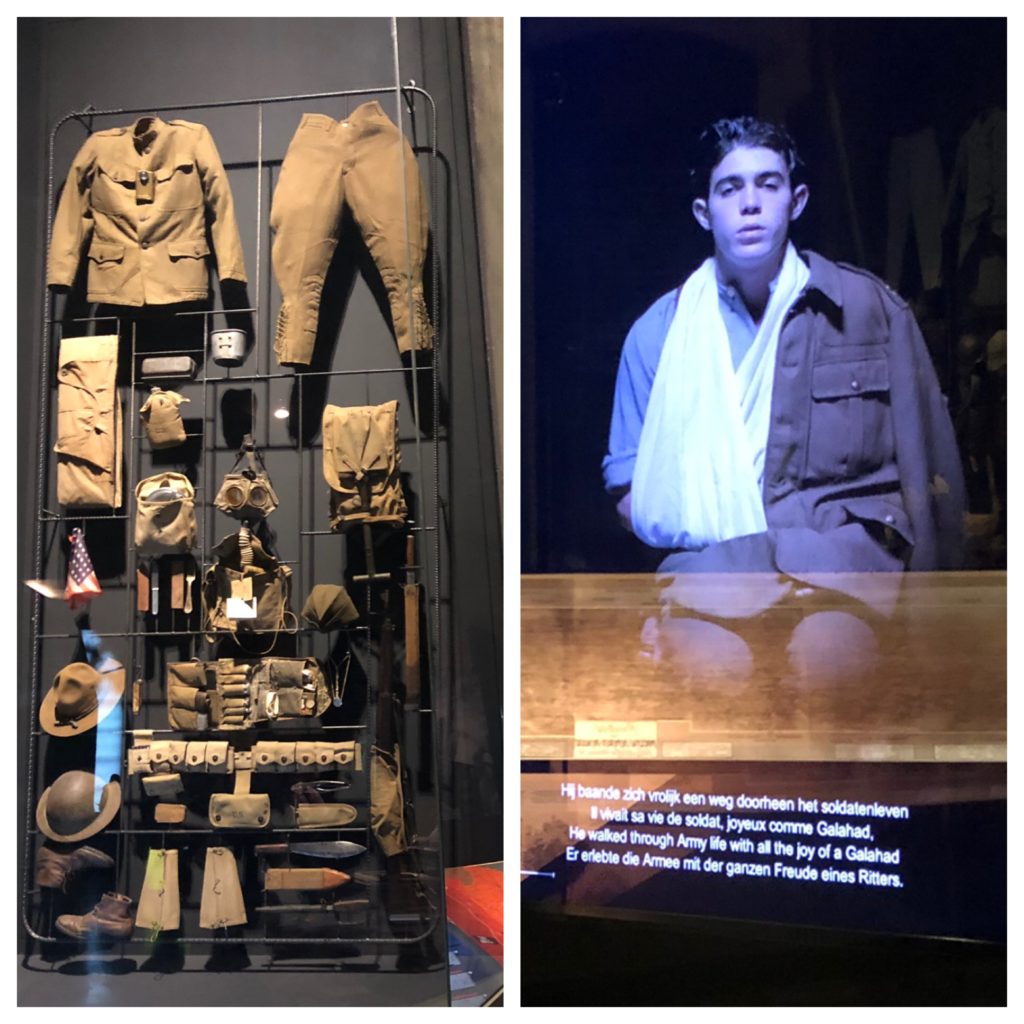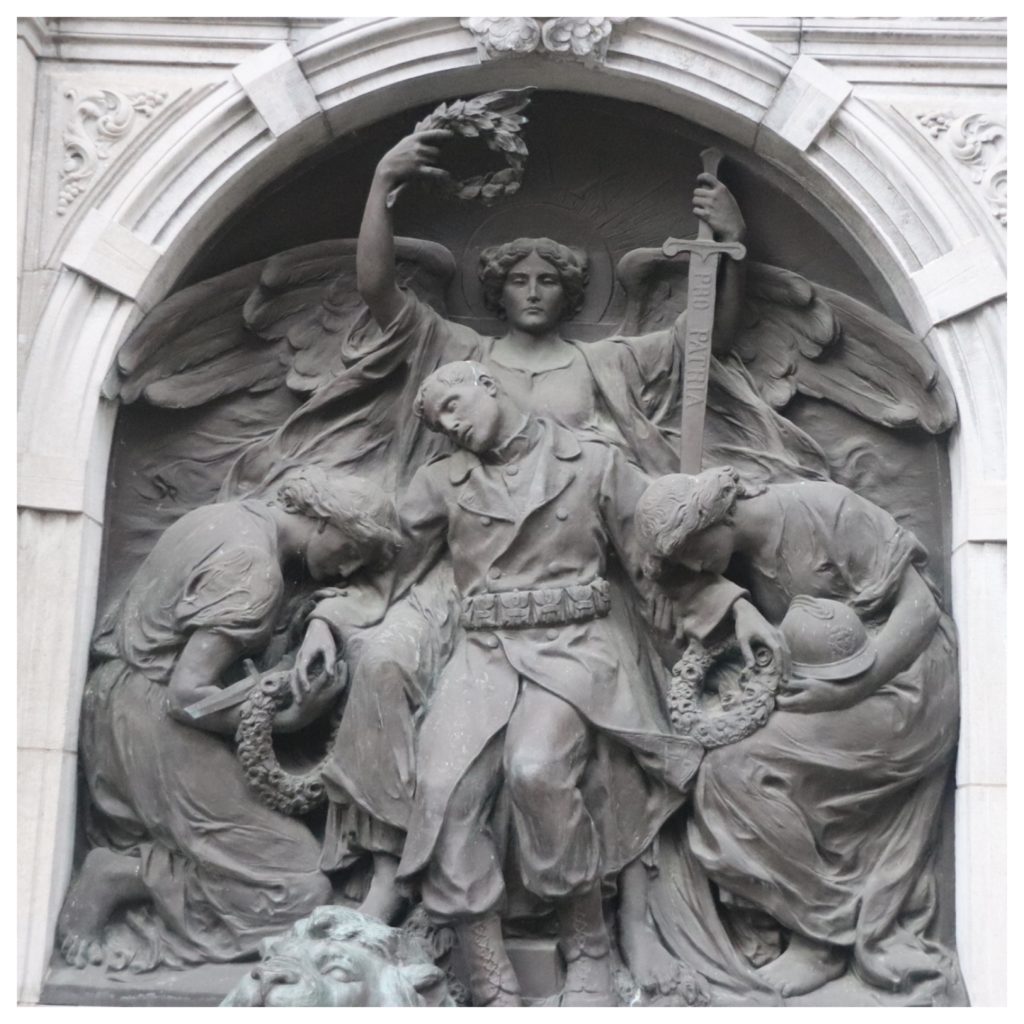Today is all about remembrance and the price of war.
During WWI, the city of Ypres was a major objective of capture by the Germans. Defending the city was a large contingent of British Commonwealth soldiers. The city was totally destroyed as was every other village in the area. It’s reconstruction was paid for as part of German reparations.


Our first stop today was the Tyne Cot cemetery. The cemetery is located on territory held by German soldiers during the war. There are still three German pillboxes located here. I’ve included a picture of what the cemetery looked like back in 1918. The back wall of the cemetery is the list of those who fought here but have no known grave. There are over 35,000 names on the walls. Looking over the grounds into the countryside, it’s hard to imagine that it was totally covered with trenches and barbed wires.


One of the three pillboxes had been turned into a medical dressing station at the end of the war. The “Sword of Service” memorial was built on top it. Today was ANZAC (Australian and New Zealand Army Corps) Day and a memorial service had just completed when we arrived. We were able to see several attendees in uniform.


Approximately 12,000 men are buried here. The insignia of their military unit is carved on their headstone. Many wreathes are still being laid here with very touching dedications.


Our next stop was Essex Farm Cemetery. It was here that Lt Colonel John McCrae wrote his famous poem “In Flanders Fields” after witnessing the burial of his friend. His friend’s grave is now lost.


The cemetery was a location of another medical dressing station housed in a concrete bunker. The large room may have been the surgery.


This cemetery houses the grave of V J Strudwick, one of the youngest to serve and die at the age of 15. He lied about his age when he joined the army. Today visitors from all over leave toys and stuffed animals at his gravesite.

From here we drove to the town of Ypres. The huge “Cloth Hall” in the center of the city now houses the “In Flanders Fields” museum. It is a multi floor museum with great exhibits such as the exhibit of American soldiers uniform kit. Another great exhibit was the video display of actors portraying soldiers relating their experiences in the war. Very touching.


At the end of the building was another WWI memorial. The center panel of this memorial is very moving. Here’s a sample of the wreathes that were laid in front.



Our final stop was at the “Menin Gate” a short walking distance from the city center. This imposing structure contains the names of another 54,000 commonwealth soldiers who have no known grave. The roadway at each entrance is closed at 8:00 pm every evening and the “Last Post” (British version of Taps) is played. This tradition has continued since the gate was built in 1927. The only time the music hasn’t been played is when the city was in German hands during WWII.


A solemn day.